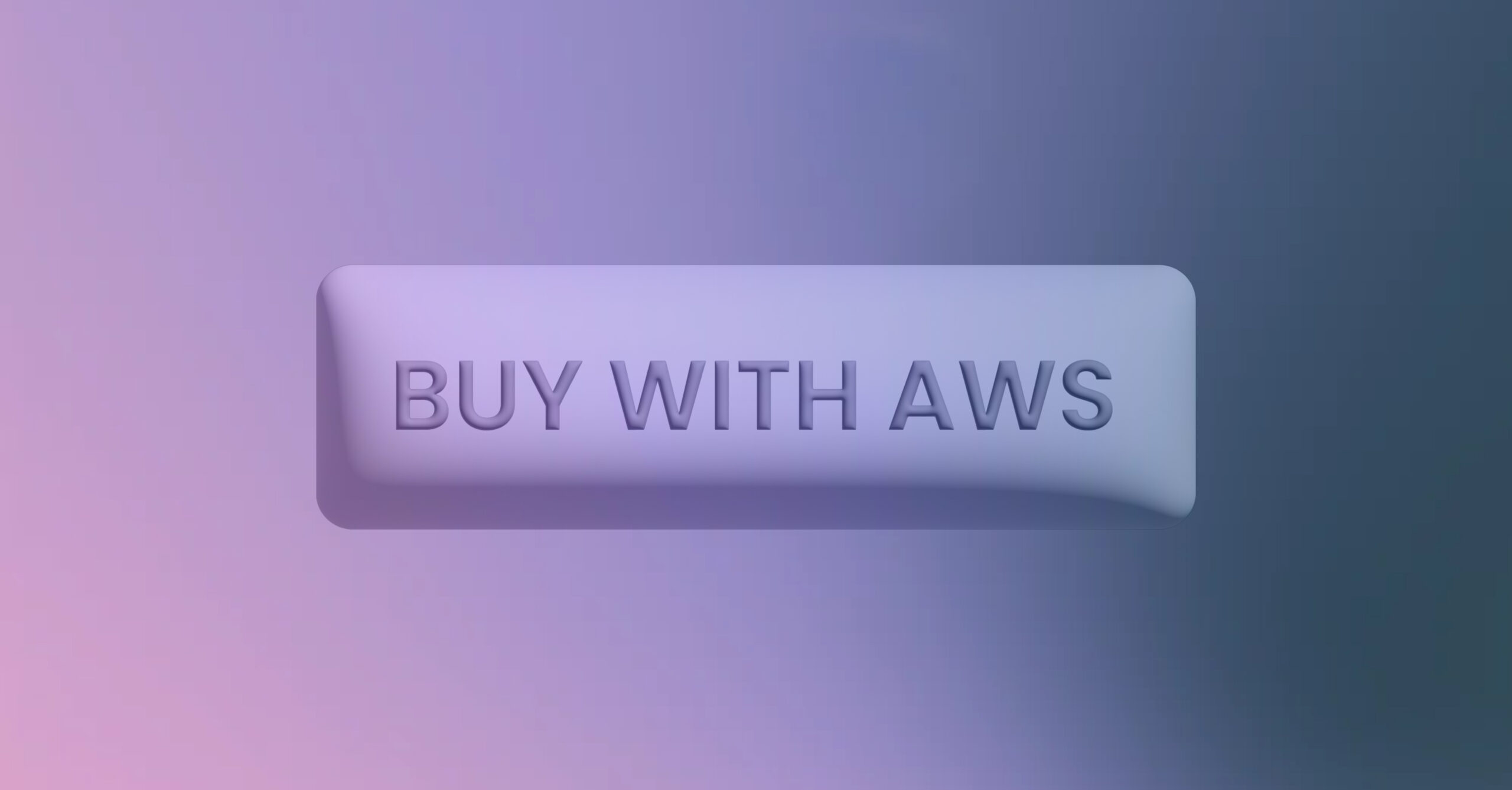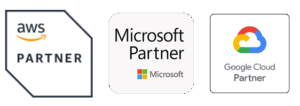A few years ago, selling through a cloud marketplace felt experimental. Today, it’s a standard path to enterprise customers, and often one of the fastest. But as more SaaS companies rely on these channels, marketplace fees have become an important part of the financial conversation.
Here’s a clear, up-to-date look at what AWS, Microsoft Azure, and Google Cloud Platform (GCP) charge in 2025, what those percentages mean for your take-home revenue, and how you can manage (and even reduce) your effective fees.
Quick Summary (TL;DR)
- AWS standardized and reduced many listing fees in January 2024: SaaS/public offers and AWS Data Exchange are 3%, server-based offers (AMI/container/ML) are 20%, private-offer listing fees scale by TCV (3% / 2% / 1.5%), and renewals are 1.5%. CPPO (channel partner private offer) adds +0.5%. (Source)
- Microsoft Azure moved to a 3% standard store service fee on commercial marketplace sales (down from ~20% historically), with special cases for partner/reseller models. (Source)
- Google Cloud Marketplace (GCP) generally follows a ~3% revenue share on most transactions, with reduced ~1.5% fees for renewals/migrations under the recent 2025 incentives. (Source)
Why These Fees Matter
Marketplace fees directly affect your net revenue per deal, margin, and the viability of usage- or consumption-based pricing. A 3% platform fee is small; a 20% server/AMI fee is not. Knowing when lower-fee events apply (renewals, large private deals, partner routes) lets you design contracts and GTM motions to plan your business strategy better.
Below, we’ll go through the detailed breakdown of listing fees and revenue share models for each hyperscaler.
AWS Marketplace
Here’s a detailed breakdown of AWS’s listing fees and revenue shares:
- Public SaaS offers & AWS Data Exchange –3% listing fee.
- Server-based offers (AMI, container, ML images) –20% listing fee.
- Private offers tiered by Total Contract Value (TCV):
- < $1M TCV → 3%
- $1M – <$10M → 2%
- ≥ $10M → 1.5%
All renewals → 1.5%.
- Channel Partner Private Offer (CPPO) adds +0.5% uplift to the applicable listing fee.
- There are regional listing fee uplifts in some jurisdictions (example: South Korea +1% regional fee).
What the seller keeps (examples):
- SaaS/public sale at 3% → seller retains 97% of pre-tax TCV. (100 − 3 = 97).
- AMI/container sale at 20% → seller retains 80%. (100 − 20 = 80).
- Private offer ≥ $10M at 1.5% → seller retains 98.5%. (100 − 1.5 = 98.5).
- SaaS private offer under $1M with CPPO uplift (3% + 0.5% = 3.5%) → seller retains 96.5%.
AWS’s move made marketplace economics attractive for high-value private deals and renewals; these are explicitly lower-fee events compared with legacy rates.
Microsoft Marketplace
Microsoft consolidated marketplace fees to a 3% standard store service fee when customers purchase your transact offer from Microsoft Marketplace, with partner/reseller arrangements (CSP, EA) providing ways to avoid or shift fees, depending on the sales motion.
Seller net share examples:
- Any standard commercial sale at 3% → seller retains 97% (100 − 3 = 97).
Note: Microsoft’s partner models (CSP resellers, EA/large enterprise agreements) and co-sell programs change the economics in certain routes to market; these can reduce the platform’s effective fee or reallocate margin to partners.
Google Cloud Marketplace
Google Cloud’s new variable revenue share model emphasises incentives, with a typical ~3% fee on most transactions and a reduced 1.5% fee for renewals or certain migration/commitment-related transactions under the 2025 marketplace incentives. These program incentives are designed to reward stickiness and migration-led deals.
Seller net share examples:
- Standard transaction at 3% → seller retains 97%. (100 − 3 = 97).Renewal or migration-eligible transaction at 1.5% → seller retains 98.5%. (100 − 1.5 = 98.5).
Comparative Fee Table (At-a-Glance)
Note: Percentages shown are listing/transaction fees applied to pre-tax Total Contract Value (TCV) or transaction amount. Always verify the exact program rules for co-sell, channel, or regional uplifts, as these can change the calculation.
How to Think About “Revenue Share” in Practice
A simple rule: seller net share = 100% − platform fee (applied to pre-tax TCV). Platform uplifts (CPPO), regional fees, or professional services fees are additive. For modeling:
- Put the standard marketplace fee in your unit economics model (e.g., 3% for SaaS).
- If you expect renewals or long-term committed deals, assume renewal fees may be materially lower (AWS/GCP renewals at 1.5%).
- For server/AMI/container offers, model a much higher cut (AWS 20%), which often makes the marketplace less attractive for certain infrastructure-heavy pricing models.
Cost-saving & Fee Minimization Tactics
Here are actionable, battle-tested strategies sellers use to lower effective fees and increase take-home revenue:
- Design deals to capture renewals: renewals often carry lower fees (AWS and GCP renewals at 1.5%). Structuring longer initial terms and automatic renewals can capture this lower-rate band.
- Plan large private deals with TCV tiers in mind: AWS private offers drop to 2% and 1.5% at higher TCV bands, so pushing larger TCV or consolidating contracts can lower fees materially.
- Negotiate via partner programs/rebates: Hyperscalers run partner incentive and rebate programs that can reduce effective fees or pay rebates based on performance/consumption (negotiate thresholds and rebates with partner managers).
- Use channel partners/reseller routes: Some channel motions avoid marketplace transaction fees or shift economics to the reseller. Evaluate whether selling through trusted resellers improves net revenue
- Offer pricing that offsets fees: Reflect marketplace fees in list price or packaging (e.g., include a small marketplace surcharge or negotiate buyer credits) while being transparent with customers. Always test price elasticity.
- Target migration or commit incentives: GCP’s 2025 incentives show programs that reduce fees for migrations or committed purchases, and structure deals to qualify for those incentives.
- Monitor regional uplifts & taxes: Some regions add extra listing fees (AWS example: South Korea +1%), so factor these into regional pricing and contracts.
Model Example
Imagine a $1,000,000 private SaaS contract on AWS (TCV = $1,000,000).
- Private-offer fee = 2% (because $1M ≤ TCV < $10M). Fee = $1,000,000 × 2% = $20,000. Seller keeps $980,000.
If that same contract were a public SaaS sale at 3% the seller would keep $970,000 (100% − 3% = 97% → $1,000,000 × 97% = $970,000). These differences scale with volume and matter for gross margin.
Final Thoughts
Marketplace fees in 2025–2026 are more transparent and, in many cases, lower than they were in past years, driven by competition among hyperscalers and incentives to grow marketplace-led consumption. AWS’s January 2024 simplification created predictable tiers and low-fee renewals; Microsoft’s move to a flat ~3% dramatically improved partner economics; and Google Cloud’s 2025 incentives reward migrations and renewals with lower effective fees. Use those mechanics, renewals, private-offer tiers, partner routes, and program incentives to maximize your retained revenue.
If you still don’t know where to start, Labra’s experts can help you with the latest AWS, Microsoft Azure, and GCP fee models and help you structure offers that maximize revenue while reducing operational friction.
If you’re looking to strengthen your marketplace presence, Labra is ready to guide every step.
FAQs
What percentage does AWS Marketplace take in 2025, and how much revenue do sellers actually keep?
How do Microsoft Marketplace fees compare to AWS and GCP in 2025?
Does Google Cloud Marketplace really charge only 3%, and when does the 1.5% fee apply?
Why are AWS AMI or container listing fees so much higher at 20%, and should SaaS companies avoid them?
Can SaaS vendors reduce marketplace fees by using private offers or partner programs?
Yes, AWS’s private-offer tiers reduce fees to 2% or 1.5% for larger deals, while GCP offers 1.5% renewals/migration incentives. Partner rebates and co-sell programs across all three hyperscalers can further reduce effective costs. Using channel partners can also shift or eliminate transaction fees.
Are cloud marketplace fees worth it for SaaS companies, or do they cut too much into margins?
For most SaaS sellers, fees around 3% are considered low compared to the benefits: faster procurement, access to committed cloud spend, reduced vendor onboarding, and accelerated enterprise sales. Even with fees, marketplaces often shorten sales cycles and increase deal size, making them net-positive.
Do cloud marketplace fees apply to renewals, expansion deals, and multi-year contracts?
Yes, but at reduced rates in many cases. AWS and GCP apply 1.5% fees to renewals or certain long-term deals. Microsoft Azure typically applies its standard ~3% rate. Multi-year private offers may also qualify for lower effective fees based on TCV thresholds.
What’s the best way to estimate my real take-home revenue after marketplace fees?
A simple formula works:
Seller Net Revenue = Contract Value × (100% − Marketplace Fee %)
For example, a $200,000 SaaS contract on AWS at 3% means keeping $194,000. Always consider private-offer tiers, renewal rates, and CPPO/channel uplifts to avoid surprises.
Is it true that cloud marketplaces help customers spend down their cloud commits, and how does that affect vendor revenue?
Yes, many enterprises prefer buying SaaS through marketplaces because deals can apply to their committed cloud spend (CCS). This often accelerates vendor deals and can increase TCV. Fees still apply, but vendors typically close deals faster and with less procurement friction.
What practical steps can SaaS companies take to reduce their cloud marketplace fees in 2025?
Vendors can:
- Use renewal-based pricing to leverage lower 1.5% fees
- Consolidate deals to hit AWS private-offer TCV tiers
- Take advantage of partner rebates and co-sell programs
- Sell via channel partners when margins make sense
- Prefer SaaS-style listings over high-fee server-based offers. These optimizations meaningfully increase take-home revenue without reducing list price.






